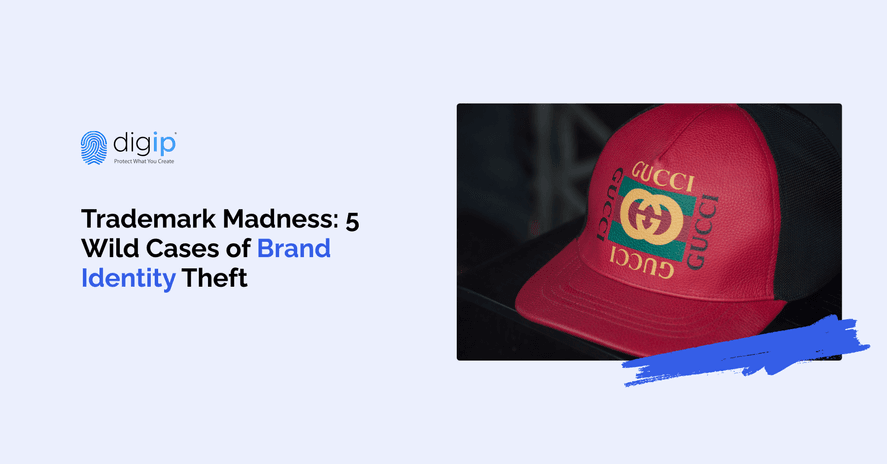
- Trademark
Best Practice for Fintech Startup Trademark Protection
When you establish your startup, you have to prepare for success, i.e., how you will run your business once it has become successful and you are engaging with hundreds of thousands of customers daily. FinTech startups are no different. The nature of their work requires them to build their security protocols to safeguard against cyber-attacks and malicious actions, as their work revolves around innovating financial processes and services for clients.
One of the most crucial steps in setting up your startup is to secure your domain name, which becomes your digital address forever. However, simply buying a domain name is not enough – being a FinTech startup, you also must consider getting trademark protection. With that said, let's have a look at the best practices for FinTech startup trademarks that are being followed in the industry.
How to Protect Your FinTech Startup Trademark?
Here are some methods and best practices that you should follow to set up a domain name for your website and protect it from domain hijacking and theft.
1. Finding a Unique Domain Name Trademark
The first step to strengthening your FinTech startup trademark is to choose a trademark that not only suits your requirements but should also be unique. You can follow the methods applied by many huge companies. Most of them have unique domain names consisting of words with no meaning but identifiers for the companies themselves. Therefore, you should conduct thorough research before locking in your FinTech startup trademark.
2. Searching for Key Markets
The second step in FinTech startup trademark is to search the markets to apply for a trademark. Of course, you can't apply for a trademark for every industry, as it won't just be impractical but also very costly. Therefore, you should explore the markets and industries that overlap with yours so that you can't have any other company with the same name as a competitor.
Since we are discussing FinTech startups, your key industries and markets would include the FinTech sector and financial services, banking, insurance, and other related fields. It is very important to find out which markets you should apply for because if you leave out any key industry, you won't be able to guarantee complete protection through your FinTech startup trademark.
3. Exploring Trademark Classes
When you search different markets, you will also come across trademark classes, which are more specific to a business or service. For FinTech startups, these are some of the common trademark classes:
- Computer and Software Products and Electrical and Scientific Products (Class 9): This is used for software, especially for FinTech startups
- Insurance and Financial Services (Class 36): This trademark covers both technology and financial services, two key components of FinTech. It is also for banking, financial, and insurance services.
- Communication Services (Class 38): If you provide a platform or portal to your customers, this trademark class is highly crucial and beneficial for you.
- Education and Entertainment Services (Class 42): If you have a SaaS platform or any digital subscription for customers, then you should apply for Class 42 as well.
- Personal, Legal and Social Services (Class 45): If you also include personalized identity verification services in your FinTech, this class is important for you.
Therefore, choosing the right trademark classes is a key step towards proper FinTech startup trademark registration. It largely protects your products and services from being replicated and offered in the same markets as yours. This process also requires a lot of research and deliberation, but it is one of the most crucial steps that can't be overlooked.
4. Applying for Trademark Protection
By now, you would have a clear idea of the key markets in which you need to apply for a trademark, as well as the trademark classes you should apply for to protect your products and services in the best way possible. Now comes another important step: applying for trademark protection by using the information gathered in the previous sections.
For this step, you will need to fill out a trademark registration application, in which you will include all the important details. Then, depending on the trademark laws of your state, you can apply for the different key markets as well as multiple trademark classes through one application. However, in most states, you have to submit different applications for different key markets.
Therefore, this will require you to gather all the details regarding how to complete your application and submit it so that you can ensure that your trademark is registered on time without any issues.
5. Check for Trademark Infringement
Once you have submitted your application, you will be informed about a timeframe to be processed, and your trademark will be registered. During this time, the only thing you can do is to keep an eye out for any misuse or illegal usage of your brand or domain name. While you may not report it or take any legal action until your trademark paperwork is through, you can still take note of these activities and take action when your trademark process is complete.
FinTech startup trademark is a crucial step to determine complete protection for your domain and brand name. It also ensures that you can focus on the quality of your products and services rather than worry about your competition or people looking to infringe on your brand name. By following all the above steps, you will be able to get your trademark registered in a short time.
Protect your brand today!
- Trademark



